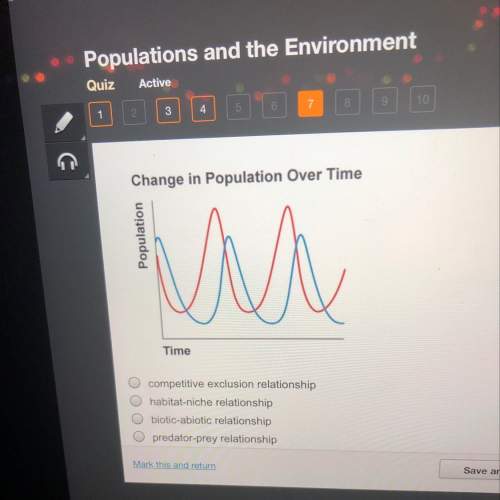
Biology, 06.03.2020 00:51, amuijakobp78deg
Based on the initial starting population, use the Hardy-Weinberg equation to predict the future bug population phenotype composition. Hint: Use the initial starting population for this data run.
Starting population:
BB = 10
bb= 10
Final count after experiment:
BB = 0
Bb = 4
bb = 16

Answers: 3
Other questions on the subject: Biology


Biology, 21.06.2019 20:00, ello17
In eukaryotes, genetic information is passed to the next generation by processes that include mitosis or meiosis. which of the explanations identifies the correct process and supports the claim that heritable information is passed from one generation to another? a. mitosis, followed by cytokinesis, produces daughter cells that are genetically different from the parent cell, thus insuring variation within the population. b. during mitosis, dna replication occurs twice within the cell cycle to insure a full set of chromosomes within each of the daughter cells produced. c. in asexual reproduction, a single individual is the sole parent and passes copies of its genes to its offspring without the fusion of gametes. d. single-celled organisms can fuse their cells, reproducing asexually through mitosis to form new cells that are not identical to the parent cell.
Answers: 1

Biology, 22.06.2019 02:00, aredding7016
The accompanying figure shows the percent of selected dna sequences that match between a chimpanzee and other primates. these data support the hypothesis that the figure shows the percentage of selected d n a sequences that match between the chimpanzee and other primates. the human has an almost 98 percent match, the gorilla has an almost 97 percent match, the orangutan has a 96 percent match, the gibbon has an almost 95 percent match, and the old world monkey has an almost 92 percent match. the accompanying figure shows the percent of selected dna sequences that match between a chimpanzee and other primates. these data support the hypothesis that the figure shows the percentage of selected d n a sequences that match between the chimpanzee and other primates. the human has an almost 98 percent match, the gorilla has an almost 97 percent match, the orangutan has a 96 percent match, the gibbon has an almost 95 percent match, and the old world monkey has an almost 92 percent match. chimpanzees and gibbons are the most closely related the chimpanzee's closest surviving relative is humans orangutans are the primates least closely related to chimpanzees old world monkeys and gibbons are the most closely related
Answers: 1

Biology, 22.06.2019 05:00, joelpimentel
Cedric has a low fever and minor aches. yesterday, he went to the doctor for his booster shot and receive the flu shot. which best explains why he has this reaction?
Answers: 2
Do you know the correct answer?
Based on the initial starting population, use the Hardy-Weinberg equation to predict the future bug...
Questions in other subjects:

Chemistry, 12.02.2020 00:50



Mathematics, 12.02.2020 00:50



Mathematics, 12.02.2020 00:50


Chemistry, 12.02.2020 00:50

Biology, 12.02.2020 00:51







